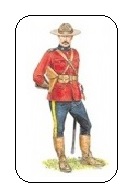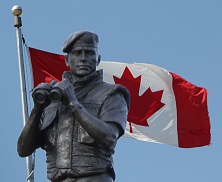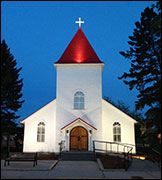True and Fascinating Canadian History
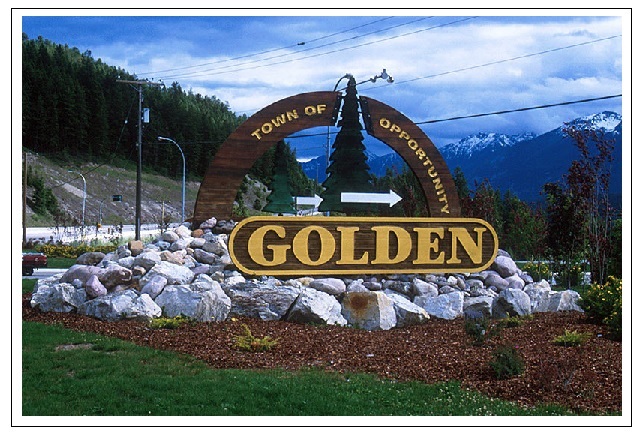
The Mystery of The Mounties
and The Golden Gumshoe Graves
by J. J. Healy
Golden is a small BC town located on the Trans-Canada Highway and nestled in Canada's Columbia Valley. The town's history is strongly linked to the Canadian Pacific Railway (CPR) and the logging industry.
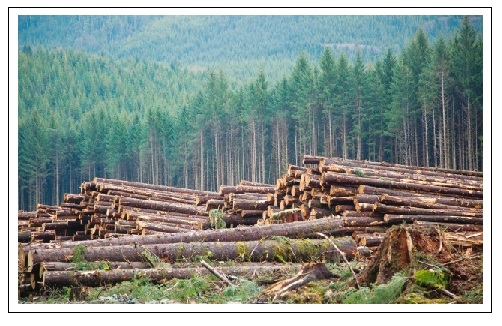
Law enforcement for Golden is the responsibility of the RCMP and sadly deaths sometimes occur within their jurisdiction as a result of accidents including snow avalanches. But, there are other puzzling matters which linger in Golden and the following story has mysterious tenets which are yet solved.
An old friend, retired RCMP Vet Alex Popovic was once posted at Golden Detachment. Alex opened the first segment of 'The Mystery of the Golden Gumshoe Graves'.
Later, the mystery deepens when another old friend, Historian and RCMP Vet Jack White dug in to help. But, does Jack solve the mystery or dig the hole deeper? Read on...
Then, unexpected but wonderful and timely help came from a reader in Burnaby, BC. Mr. Doug Turner worked for the Canadian Pacific Railway (CPR) as an Operator at Golden, BC during the late 1950's and early 1960's. Mr. Turner added a new dimension to the mystery and I am very, very appreciative to Mr. Turner for his help.
Part I:
by Vet Toronto, ON Vet Alex Popivic
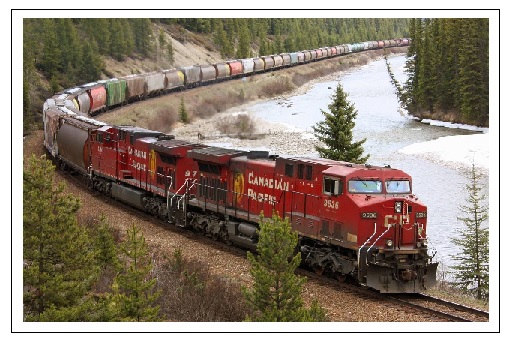
Alex begins; "Joe, I have searched your website for RNWMP graves in Golden BC. You might have one listed; however, I'm not sure that you have both of them in the National Graves Discovery Database.
I recall there were two graves that we inspected on an annual basis when I was stationed in Golden between 1974 and 1976. The graves which I recall are located in two different spots along the Canadian Pacific Railway (CPR).
The first grave was located in a site several miles from the Trans Canada Highway (TCH) and one had to access it via rail handcar. It was located about 2 to 3 miles west of Donald, BC. I'm not sure, but it may have been flooded by Kinbassket Lake after they created the Mica Dam on the Columbia River.
The other grave was in Golden and behind what was then the Golden Arms Hotel. The Hotel sat between the CPR line and the TCH just to the south of the bridge that comes off the TCH and leads into town. Perhaps there may still be some record of these two gravesites?
Then, as I recall there was also a third grave of an RCMP member who drowned in the Columbia River at Parsons, BC when a supply boat taking supplies to Ft. Steele floundered. I have no recollection of where that particular gravesite was but I do recall it was in the area of Parsons, BC.
Joe, I hope this information is of some assistance to you".
Yours truly,
Alex Popovic
RCMP Vets Toronto, ON.
Part II:
by Kamloops, BC Historian & RCMP Veteran Jack White
The Mystery of the Golden Gumshoe Graves caught the attention of Vet and Historian Jack White. Jack picked up the trail of Alex Popovic's tale...
Jack said; Joe, 'I was stationed at Golden from 1953 to 1954 and there were no RCMP graves known or inspected in those two years.
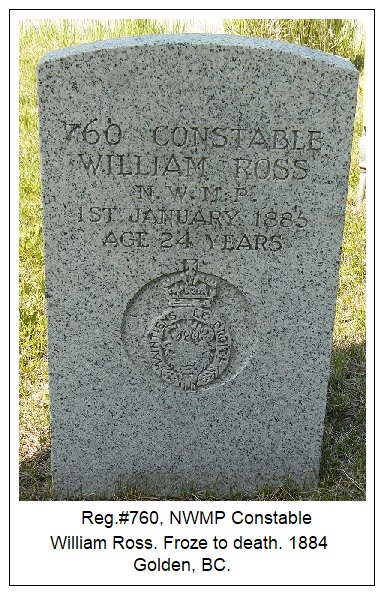
However, in the fall of 1954 I found a NWMP grave on the hillside behind the CPR oil storage tanks. It was of Reg.#760, Constable William Ross who died on December 31, 1884 at Palliser, BC. I began correspondence with 'HQ' Ottawa to have the grave moved to an appropriate place and it was moved in 1955 to the Golden Cemetery by then Corporal Al Jensen.
Years later, when I became interested in RCMP history, I learned that Reg.#13, Sergeant Major Thomas Horatio Lake committed suicide at Golden about July 7, 1887 or so. I began searching for the Lake gravesite, but with no luck. The only references I ever found were in Supt. Sam Steele's book Forty Years in Canada to the effect that "...we buried him [Lake] among the pines next to camp". The open question was: Where were they (the NWMP) camped?
From other references in the same book, it appeared to my logic that the camp was across or south of the Kicking Horse River from the CPR somewhere near the present day RCMP Detachment or the Golden Hospital. I concluded that he - (S/M Tom Lake) was probably buried somewhere under the present town site. I tried searching for their cemetery records, but they were lost in a fire many years ago.

As the years went gone, I have searched all my narrative research for any reference to a member's death at or near Donald and Parsons, but with negative results. I have no recollection of any event leading to death of a member at either location.
So, the mystery as I see it is whether it is possible that one of two graves taken care of by Alex Popovic in the 1970's is in fact the grave of the deceased member recorded in Sam Steele's book and has yet to be correctly identified?
Yours truly,
BC Historian & Veteran Jack White
^ Back to Top ^
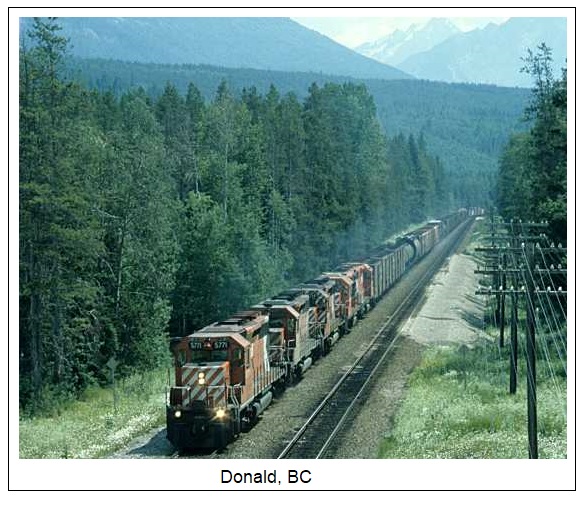
Part III:
by Mr. Doug Turner, Burnaby BC
Hi Joe,
I may be able to cast some light on one of these graves.
I worked as a CPR Operator at Golden on two separate occasions in the late 1950's and early 1960's. The CPR provided us with a caboose in which to stay which was spotted on a track in a gravel pit by the oil tanks where the grave of William Ross, NWMP was located, as Jack's reference states.
The author of 'Golden Gumshoes' mentions that the grave was moved in 1955 but perhaps he is mistaken because it was still there on the two occasions that I worked at Golden; (late 50's and early 60's). There was wooden marker with a neat little wooden picket fence around it, both unpainted.
I wanted to show friends the gravesite when I was at Golden about 6 weeks ago, (October, 2010) but of course it has been moved. My research as to where it had gone led me to this article on the Buffalo Blog.
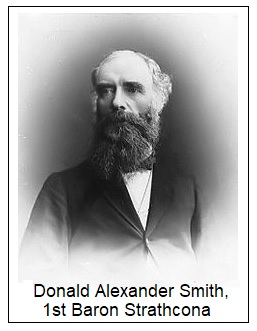
My understanding of what happened is based on something I read somewhere -'The National Dream' by Pierre Berton. I think there was a New Year's Eve dance to be held at Donald, BC that night and Constable Ross, wanting to attend, waited to grab a ride there on a train from Golden. Bear in mind that the track had only reached Donald at the end of the construction season in the fall of 1884, and there was no regular train service west of Alberta, so the only trains would be the odd supply train at this time and season. It would be a case of "catch-as-can-catch".
Anyway, after a long wait at Golden no train arrived so Constable Ross set out to walk to Donald, about 15 miles north. It wasn't unusual in those days when people were used to walking long distances. Anyway, it turned very cold and Ross was found frozen to death between Golden and Donald, and not Palliser which is east of Golden.
Constable Ross is now buried in the Royal Canadian Legion Cemetery at Golden with the standard Mounted Police headstone. His date of death is given as January 1st, 1885, whereas I think his original grave, was marked December 31st 1884.
You might type in 'Royal Canadian Legion Cemetery Golden, East Kootenays, B.C. Canada' for the interment list.
I hope this news might clarify things, although there is the discrepancy between the place of death and the date of moving of Constable Ross's remains to their final resting place.
Yours truly,
Doug Turner. Burnaby, B.C.
Email: smdvturner@shaw.ca
^ Back to Top ^
Hi again Joe,
I'm glad you enjoyed my note. However, it may have been somewhat premature. After I sent it to you I uncovered more information.
The following is from the 'Golden Star' by Colleen Palumbo, dated July 13, 2010;
"On New Year’s Eve, 1885, Constable William Ross died while on duty. He and Constable Ernest L. Percival set out to walk from Golden City to the Third Siding - a CPR installation west of the town. Constable Percival arrived at the Third Siding at 2:30 a.m. and reported that Constable Ross had not been able to walk any longer and was approximately five miles from the Third Siding. Constable Percival built a fire for Constable Ross prior to leaving him. A search party found Constable Ross badly frozen and barely alive. He died a short time later.
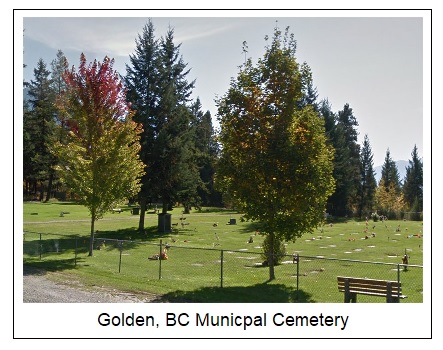
Constable Ross was originally buried in the Pioneer Cemetery in Golden; however, his remains were moved to another location in Golden in 1954 when they were located by Constable White. Constable Ross’ grave marker was moved to the Calgary Heritage Park in 1964. Constable Ross had engaged with the NWMP on April 12, 1882 in Toronto, Ontario".
Joe; as a railroader I can elaborate on this. When a railroad was under construction the various sidings to be built in the section covered under the construction contract were simply given as First, Second, etc. These would typically be about four to seven miles apart. After the railway was completed they were given names, usually for explorers, early settlers, railway officials, landmarks, etc. Present-day Donald was and remains the third siding west of Golden, it was also known as "First Crossing" because this is where the CPR first crossed the Columbia River. Revelstoke being "Second Crossing".
In the winter of 1884-85 it was the "end-of-steel' until construction resumed in the spring of 1885. Hence, it would have been a focus of population and therefore the centre of New Year's Eve festivities.
First Crossing or Third Siding became Donald after the completion of the railway and was named for Donald Smith, a Director of the CPR. It was for a time a thriving town, being the CPR divisional point for the Mountain district with a locomotive shop, yards etc. until the railway moved the divisional headquarters lock, stock and barrel to Revelstoke in Feb. 1899.
It continued on a smaller scale as a lumbering town, but is now virtually a ghost town. The last mill closed about 10 years ago but even in its last decades most employees lived in Golden and drove out to work there. The cemetery there is very interesting, many of the little wooden headboards and picket fences erected in the 1880's -90's - like those of Constable William Ross in Golden - are still standing today owing to the cold, dry climate.
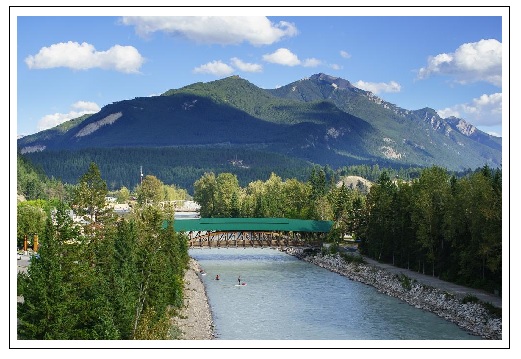
Anyway this is a bit off the subject; but, if you go to the link above there is more history of the NWMP/RCMP at and near Golden B.C., I just abstracted the relevant paragraph.
I'm surprised to learn Constable Ross was re-interred in the mid-50's because the picket fence and headboard were still by the Golden Railway Yard in the late 50's early 60's.
Perhaps they were simply left, since the standard RCMP memorial was provided at the re-interment site.
Probably the marker referred to and removed to Heritage Park in 1964 was from the original grave site.
Yours truly,
Doug Turner,
November 14, 2010
Reporting from Fort Healy
J. J. Healy,
November, 2010
